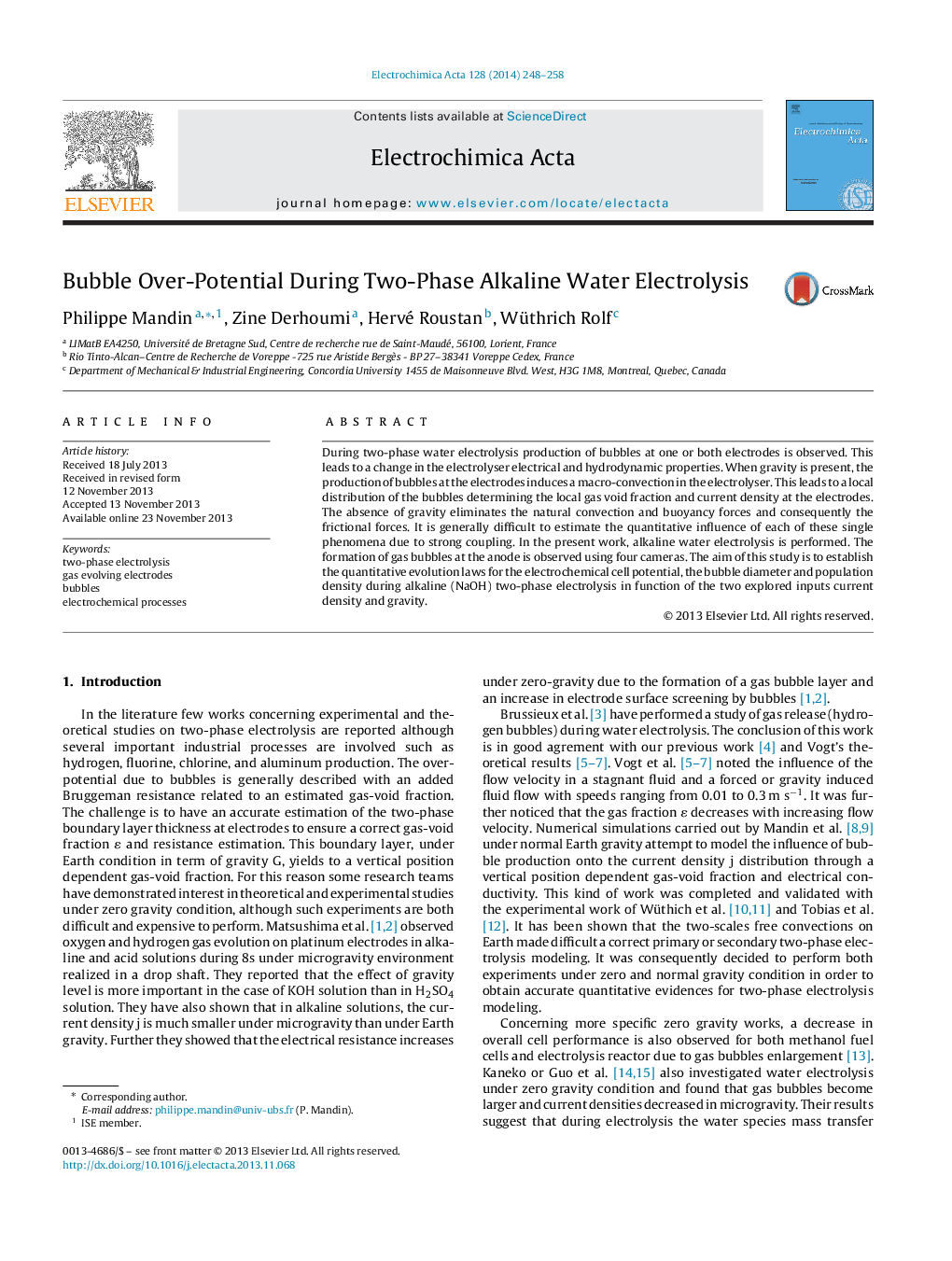| Article ID | Journal | Published Year | Pages | File Type |
|---|---|---|---|---|
| 186097 | Electrochimica Acta | 2014 | 11 Pages |
•Cell potential occurring during alkaline water electrolysis have been measured and related with the two-phase boundary layer structure in term of bubble-diameter and bubble-population.•Sensitivity analysis with two explored parameters is performed.•Quantitative information for two-phase electrolysis multi-physics multi-scale modeling is provided.•Changing gravity is helpful for estimating the consequence of bubble accumulation during two-phase electrolysis.
During two-phase water electrolysis production of bubbles at one or both electrodes is observed. This leads to a change in the electrolyser electrical and hydrodynamic properties. When gravity is present, the production of bubbles at the electrodes induces a macro-convection in the electrolyser. This leads to a local distribution of the bubbles determining the local gas void fraction and current density at the electrodes. The absence of gravity eliminates the natural convection and buoyancy forces and consequently the frictional forces. It is generally difficult to estimate the quantitative influence of each of these single phenomena due to strong coupling. In the present work, alkaline water electrolysis is performed. The formation of gas bubbles at the anode is observed using four cameras. The aim of this study is to establish the quantitative evolution laws for the electrochemical cell potential, the bubble diameter and population density during alkaline (NaOH) two-phase electrolysis in function of the two explored inputs current density and gravity.
